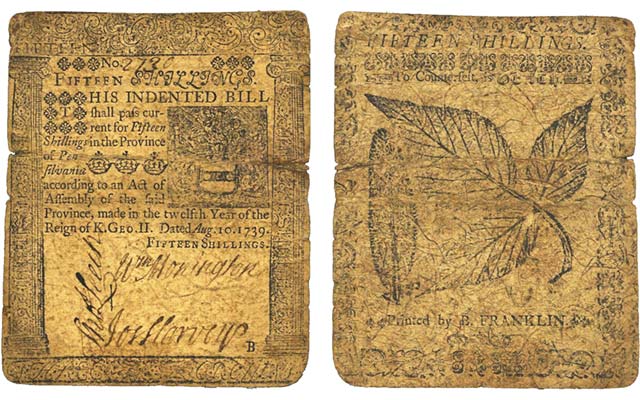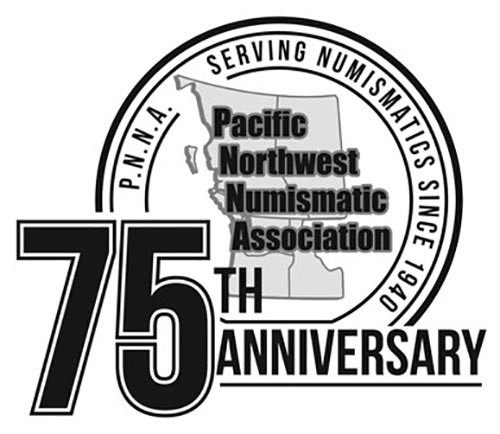
Paper currency is one that many of us take for granted in today’s modern world. With electronic transfers, bitcoins, and the like becoming an everyday occurrence for the general populace conducting transactions, it’s easy to forget how paper currency got its start and thus played such a significant role in United States history.
The United States colonies issued their first paper currency in 1690 during the King William’s War, in Massachusetts Bay. Initially called “bills of credit”, the tender acted as an IOU to soldiers fighting in the war and could be spent as though it were silver or gold. Soon after, the other colonies followed suit and began printing their own notes as well until the British declared colonial currency illegal in 1764.
However, in 1739, Benjamin Franklin began his own printing of paper money in efforts to combat counterfeiting. Using an innovative process by incorporating actual leaves to create raised patterns helped to effectively deter counterfeiters. His press produced what is still today revered as some of the most unique and beautiful notes.
In 1775, the Revolutionary War needed financing and the Continental Congress began printing paper  currency, which would become known as Continentals. The notes had no gold or silver backing and cause a great deal of inflation, which the colonies had no means to support. Continentals were also easily counterfeited leading to a quickened decrease in value. This devaluing gave birth to the phrase “not worth a Continental”.
currency, which would become known as Continentals. The notes had no gold or silver backing and cause a great deal of inflation, which the colonies had no means to support. Continentals were also easily counterfeited leading to a quickened decrease in value. This devaluing gave birth to the phrase “not worth a Continental”.
With the colonies winning the Revolutionary War and the United States beginning its infancy, legal tender would take on many forms, faces, and sizes throughout the ages. Ever at the forefront, counterfeit deterrents took precedence in order to secure the integrity of the country’s money. This is seen as red seals and serial numbers were introduced on United States notes in 1862. These features became a staple in American currency until 1971, when United States notes were discontinued and permanently replaced by Federal Reserve notes.
After the Federal Reserve began overseeing, as well as financially backing, the production of currency, both coins and paper, heightened security features have been added. Features such as watermarks, microprinting, security threads, and experimenting with color have all been observed in each denomination with the intent to preserve America’s integrity when it comes to paper money.
Notes will continue to undergo redesigns as some begin to be phased out, and others introduced. The changes and transformations will be beautiful articles of history should we ever gravitate towards becoming 100% electronic.
If you like this article, then you might enjoy other articles in our archives, such as The U.S. Mint Has Released A Number Of Coveted Coins With The Help Of Engraves and Designers.
Liberty Coin & Currency specializes in rare coins and currency. We are a family-owned business located in Portland and Vancouver. We are also gold, silver, diamond, currency and jewelry buyers. Visit us first for a free evaluation.
Like this post? Let us know on Facebook, Twitter, Instagram, or Pinterest







